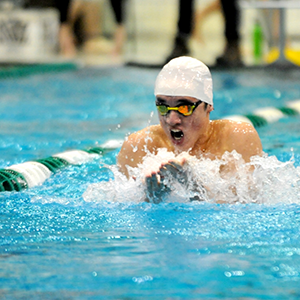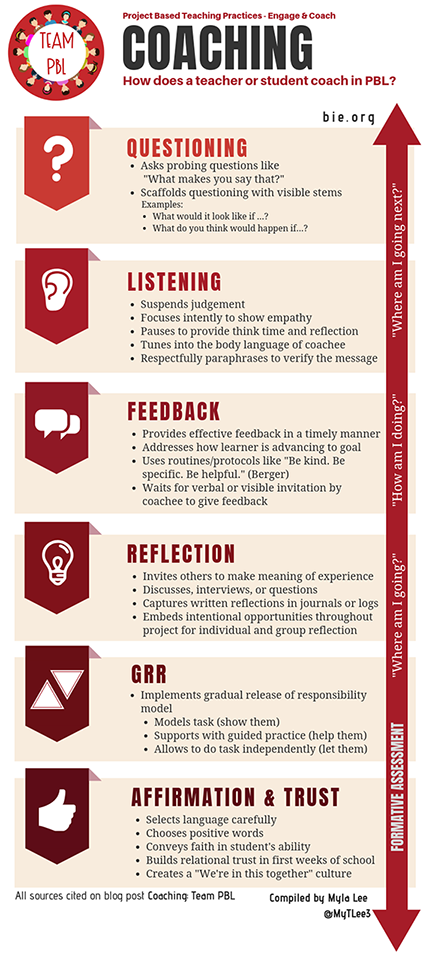 Who were your BEST teachers? That’s a question I asked my son Jonathan after he graduated from high school. His answer surprised me, because he didn’t give specific names or subject areas. He simply said, “The best teachers were like my coaches.” As a competitive swimmer, he’s had his fair share of coaches. His answer piqued my curiosity and I asked him to explain:
Who were your BEST teachers? That’s a question I asked my son Jonathan after he graduated from high school. His answer surprised me, because he didn’t give specific names or subject areas. He simply said, “The best teachers were like my coaches.” As a competitive swimmer, he’s had his fair share of coaches. His answer piqued my curiosity and I asked him to explain:
The best teachers were like my coaches because they believed in me and my ability to do the work. If I needed to learn a new turn or stroke, Coach showed me on the pool deck, step by step. Sometimes he jumped in the pool and helped me by guiding my movements with his own hands. When I did it right, I knew it because Coach would let me know. When I didn’t hit the mark, Coach helped me understand what I got wrong and how to fix it. At the beginning of the season, Coach asked each swimmer what his or her goals were as individual swimmers and as a team. Then, after every practice or small meet, we touched base about how we were doing. How close were we to our goals? What would we need to do to work toward those goals? How were we as a team? He listened to us--really listened to us--and encouraged us. Most of all, Coach knew what each of us was capable of and helped us get there.
Outside the pool, the techniques employed by Jonathan’s coach can be implemented in a Project Based Learning classroom. In fact, Engage and Coach is one of the Project Based Teaching Practices, and that practice can be broken down into a set of skills demonstrated by the most effective coaches. The graphic below summarizes the following coaching skills:

Questioning
A coach asks probing questions to the coachee (the student being coached). These types of questions are intended to help a person think more deeply about the issue or topic. The thinking routine or probing question “What makes you say that?” is a great example. You might see question stems visible on the Project Wall or other resources (desks, anchor charts, etc.) to help support peer-to-peer coaching. Some examples of questions stems might be:
- Why do you think this is the case?
- What would have to change in order for …?
- What do you wish?
- What’s another way you might…?
- What would it look like if …?
- What do you think would happen if…?
Listening
A coach actively listens. He or she suspends judgment, focuses intently on the coachee, doesn’t interrupt, and provides pauses to allow the coachee time to think (Willis, Edutopia, 2018). A coach’s body language is in tune with the coachee, as evidenced by eye contact, leaning in to show interest, nodding for agreement, and conveying empathy about what is being shared through facial expressions. One way of affirming the coachee is by respectfully paraphrasing the message.
Feedback
In a coaching interaction, a coach gives effective feedback. It’s important, though, to make sure that feedback is solicited or invited by the coachee. Then the coach provides information about how the coachee is doing in his or her efforts to reach a goal (Wiggins, Seven Keys to Effective Feedback). When giving feedback, the coach is as specific as possible and, in a timely manner, addresses how the learner is advancing to his goal, provides feedback carefully as it relates to personal goals and not to promote competition, and involves the learner in the process (Stenger, Edutopia, 2014). Using Ron Berger’s critique protocol, you would hear language that was kind, specific, and helpful as a coach gave feedback to a coachee. The T-A-G Peer Feedback scaffold provides small steps for those introducing feedback in their classrooms. Making T-A-G sentence starters visible will also help encourage student-to-student coaching. In addition, Gallery walks, Google Classroom, and Padlet are other ways to help make the feedback visible too.
Reflection
A coach provides opportunities for meaningful reflection throughout the project path. Coachees are invited by a coach to make meaning of their experiences in written and oral form. Guiding reflections through discussions, interviews, and questioning can be facilitated by a teacher coach or a student coach. Written reflections can be captured in journals and logs (Costa and Kallick, ASCD 2008). Visible thinking routines and student blogs are other written artifacts to reflect on the process of learning.
Show Them, Help Them, Let Them
A coach uses the gradual release of responsibility model to be intentional about instruction. By modeling (“show them”) how to do a task and supporting them with guided practice (“help them”), the goal is for students to do the task independently (“let them”) (Pinjanowksi, Edutopia, 2018). For modeling facts and procedures that require precision, such as math and grammar, a coach may implement explicit modeling to help narrow and break down the steps.
Affirmation and Relational Trust
Words are powerful. Coaches are selective about the language they use. Positive words go a long way. Doesn’t it feel great to have someone acknowledge when you’ve done something right? Conveying faith in a student’s ability not only provides affirmation, but it also helps build relational trust between the coach and the coachee. It’s important to note, though, that relational trust begins long before a coaching conversation or a project. Knowing your students well, practicing empathy, and creating a collaborative culture of “We’re in this together” happens in the first weeks of school (Wormeli, ASCD, 2016).
Formative Assessment
Lastly, an effective coach is always formatively assessing the needs of his or her individual students. This is the thread, woven into all these skills, that helps a coach decide what moves to make. Through listening, questioning, and observing, the coach and coachee can use reflective questions such as “Where am I going?” “How am I doing?” and “Where am I going next?” to guide their next steps (Fisher and Frey, ASCD, 2011).
The BEST coaches believe in the potential of their coachees and, through questioning, active listening, reflection, modeling, assessment, establishment of trust, and affirmation, help them achieve their goals. Are you ready to try these techniques?
Do you have any questions? Please let me know. After all, we’re all in this together. I believe in you and your incredible potential. Go Team PBL!

